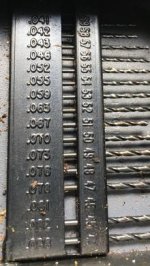Tinker Pearce
Member
I just purchased this remotely from an out-of state shop. It's reported to be in good order, but I was told the cylinder free-rotates when the hammer is down, but locks up tight when the gun is cocked. Is this normal for this model?


I'm getting the gun regardless at that price; if need be I can sort it out, but I am curious.


I'm getting the gun regardless at that price; if need be I can sort it out, but I am curious.



